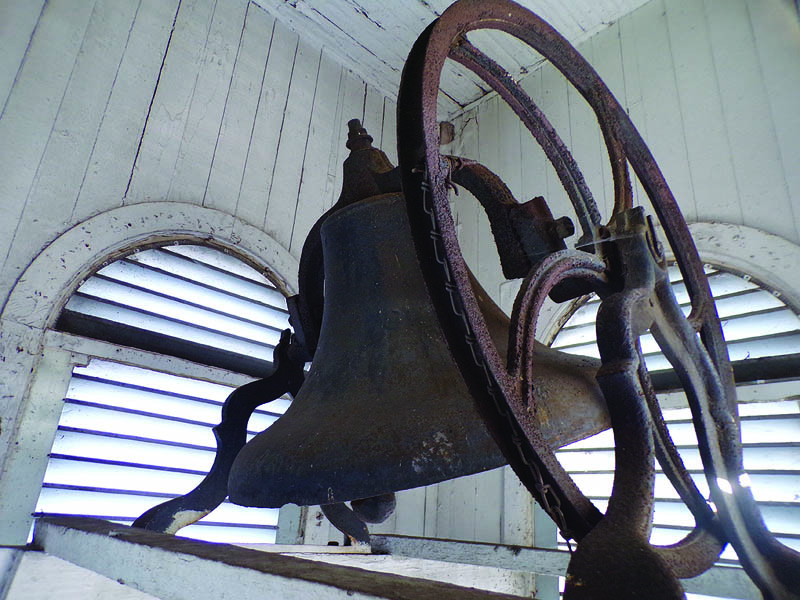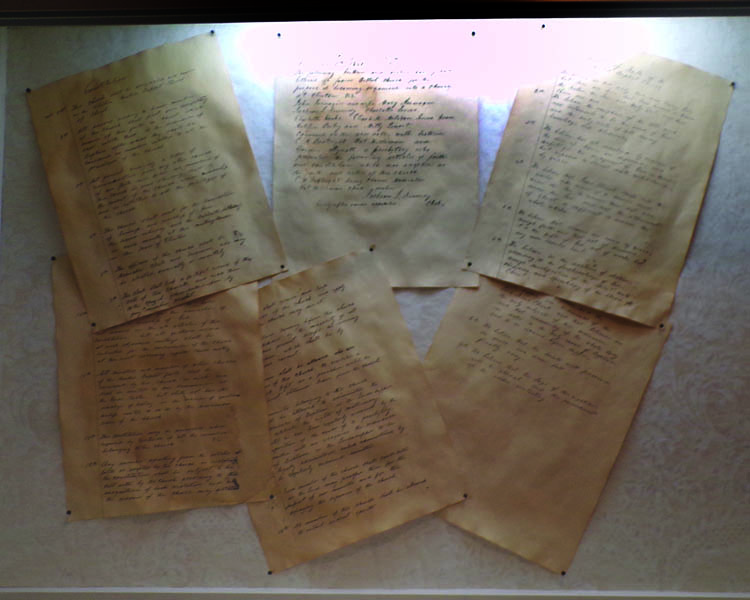Clinton’s First Baptist has a ‘bell’ of a history
The history of Clinton’s First Baptist Church tells the story of a bell that has traveled from the original church sanctuary to the present sanctuary and a courageous mid-20th-century pastor who was ahead of his time.
This rich history is recorded in the church’s history room, which contains a wealth of information including aged photographs and original 182-year-old handwritten documents
It all began in 1840, a few miles to the east, across the Clinch River, at Bethel Baptist Church. The members of that church, which was constituted in 1833, saw the need for a church in the little town of Clinton. According to the handwritten “Letter of Dismissal,” dated Oct. 31, 1840, two men and seven women, John Jarnigan and his wife, Mary, Jackson L. Kennedy, Charlotte Severs, Elizabeth Hooks. Elizabeth Milican, Levina Goins, Delilia Bailey and Millie Linart (original spelling) were dismissed to form a new church.
As recorded in another handwritten document titled “Church Proceedings” dated Nov 7, 1840, those nine people met with a presbyter consisting of C. H. Boatwright, Mat Hillman and Gordon Mynatt to form the “Clinton United Baptist Church of Christ.” It was decided the church would meet for the transaction of business and worship the second Saturday and the following Sabbath in each month. Monthly services were held until 1870. The group adopted the Articles of Faith that was in use by Bethel. The following day, the newly constitued church called J.S. Corum as pastor and ordained John Jarnigan as the first deacon.
At first, the new church met at Baptist Academy and the courthouse. Then the following year, 1841, the church built a one-room building seating about 250 people with a wood-burning stove in the center. The new building had a belfry and was located just north of the old Baptist Cemetery near Edgewood drive.
In 1861, just before the outbreak of the Civil War, the Rev. Corum was offered a chaplaincy in the Union Army. However, he would not leave his church. A short time later, the church held a special service for young men entering the conflict. In keeping with the divided sentiment of the times, some of the young men honored fought for the Confederacy and some for the Union. The church did not hold services during the Civil War, but members met in private homes.
In 1881, the first Sunday School was organized under R.C. Medaris, who became pastor in 1917.
By 1893, the congregation had outgrown the first building, and a second building was built on the site of the present church building. The bell from the first building was moved to the belfry in the new church. This building was remodeled in 1922, and the present building was completed in 1939. Its belfry contains that original bell. Now it is only rung on special ocassions.
In 1948, following the missionary tradition of Bethel, First Baptist was instrumental in the formation of Norris First Baptist Church.
Larry Gann has been a member of First Baptist Church since 1948 with the exception of three years when he was in South Carolina. His parents were also faithful members. He said the services in his younger days were much more formal than are now, with the men wearing suits and ties, the ladies wearing hats and gloves, and the ministers at the podium wearing boutineers.
People had their accustomed seats. He remembers in the 1950s that people were sometimes asked to move when they were sitting in someone else’s seat. He said that certain people rang the bell each Sunday.
While Gann said the more-relaxed services are not a bad thing, he thought it might be good to bring back the custom of ringing the bell every Sunday.
Gann recalls that a hatch from the belfry gives access to the roof of the church. He said that one time, his father climbed out onto the high, steep pitched roof to place rubber snakes in the rain gutters to scare birds away.
Dot Howell, who is 83, has been attending First Baptist continuously since her birth except for one year when she was away at college.
She recalls a lady sitting up in the balcony who had told the pastor that when she rattled her car keys, it was time for him to quit preaching.
Of the many men who have served the church as pastor, one stands out for his courage and convictions. In 1956, the Clinton school system was integrated by court order. The Rev. Paul Turner, a man ahead of his time, escourted 10 of the first 12 Black students to the white school on Dec. 4, 1956.
He had reportedly reached out to other area pastors, but none would join him. This activity was unpoplar with some people, who later ganged up on him and beat him badly. The following Sunday, he told his congregation, “There are no color lines at the cross.”
Gann’s parents were close friends of Turner, and Gann said Turner was very much loved by the congregation. He said there would soon be a historical marker commemorating Turner’s stand. While some people left the church, Gann said most understood. “He preached what he believed,”Gann said of Turner.




